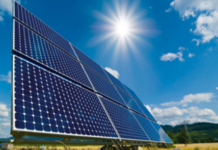
Mumbai: The Mumbai Metro One Private Limited (MMOPL) on Saturday announced that solar panels were installed at the Andheri Metro station and Ghatkopar Metro station and installation work is underway at remaining 10 Metro stations of the Versova-Andheri-Ghatkopar Metro-1 corridor.
The move is aimed at seeking to use renewable energy source and is also expected to meet 30 per cent of the non-traction requirement. Currently, the Metro’s annual auxiliary power requirement for non-traction use is 11.00 megawatts (MW); 30 per cent of which will be met with solar energy once the system is implemented.
“Mumbai Metro One is already an eco-friendly mode of transportation and provides the cleanest and safest ride to the commuters. As a responsible and conscientious mass rapid transport (MRT) utility, it is our endeavour to reduce our carbon footprint as far as possible. Our initiative to harness solar power for meeting a part of our electricity requirement is to reinforce our commitment to the green cause,” MMOPL spokesperson said.
The entire roof top solar power generating system will have a capacity of approximately 2.30 MW which will generate 3.2 million units electricity per year. The installation is a part of going green in a big way by harnessing solar power for meeting the part of energy requirement.
The operator, MMOPL has also cut down its water consumption for cleaning inside train compartments by a whopping 90 per cent from an earlier 200 litres to just 20 litres for each train. This was achieved through a durable epoxy coating on the train floors, which repels dust and dirt and is easier to wash. Due to the special floor coating, the train compartments do not require heavy washing anymore.
How does it work?
Electricity generated from the solar panels will be utilised for operations of various stations equipment such as lighting, air-conditioning, lifts, escalators and pumps. It has also initiated the retrofit installation of light – emitting diode (LED) lighting at metro stations, depot and administrative buildings to reduce its electricity consumption.
Source: www.asianage.com


















